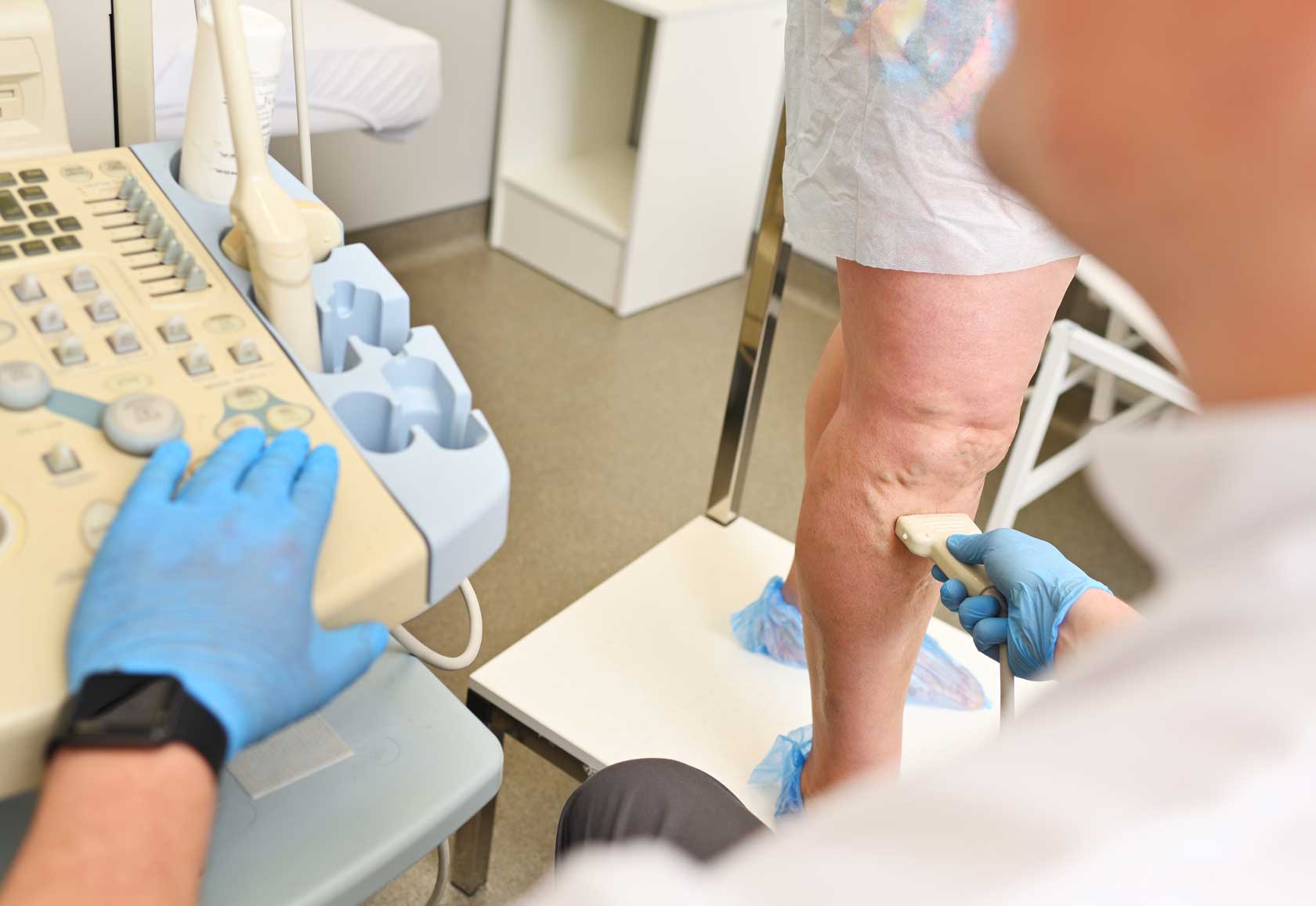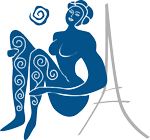Vascular Surgeon
Expert in the treatment of varicose veins
Questions and answers about varicose veins and the ASVAL method

How are varicose veins diagnosed?
The first step is to question the patient, looking for any suggestive symptoms, followed by a clinical examination to diagnose visible varicose veins, or to detect varicose veins that may not be apparent.
Immediately after the exploration, we carry out the indispensable Duplex ultrasound, which enables us to see precisely through the skin the veins identified during the clinical examination, as well as any unseen veins that may be diseased. Not only will we be able to assess their size, but we'll also be able to test their direction of circulation, looking for any flowback, known as reflux, which is clearly visible on the Duplex ultrasound and characterizes a diseased vein, which can then be considered a varicose vein.
Conversely, a visible or palpable vein showing a normal direction of circulation on Duplex ultrasound is not a varicose vein and must be respected.
Beyond diagnosis, can clinical examination and echo-Doppler suggest appropriate treatment?
Yes, of course, clinical examination and Duplex ultrasound will also enable us to determine very precisely whether patients can benefit from the ASVAL method or not, i.e. whether or not we can keep the saphenous vein.
The patient's situation, age, complaints, skin condition of the leg, and Duplex ultrasound data (location, size of varicose veins and, above all, quality of the saphenous vein) provide sufficiently precise information for the ASVAL method to be proposed to the patient, ASVAL or for the saphenous vein to be removed.
How many people in France are affected by varicose veins?
It's a very common condition that can be disabling and painful.
In the course of a lifetime, one person in 2 is likely to be affected by varicose veins to a greater or lesser extent.
Did you know that 17 million people are affected by real varicose veins in France today, and that a significant proportion of these 17 million people may experience significant discomfort?
So, it's not just a problem of visible, unsightly veins; it's also a medical problem that can cause pain and heaviness, and tends to worsen if nothing is done, sometimes leading to complications such as phlebitis or skin disorders.
Do varicose veins affect men or women in particular?
In fact, varicose veins affect as many men as women.
Contrary to what you might think, the difference lies in suffering.
Women suffer more from this problem from an aesthetic point of view and also from a pain point of view due to female hormones which cause the veins to dilate and increase the sensation of pain, heavy legs, etc. Unlike men who are less sensitive to this problem.
Are varicose veins a hereditary problem, or can anyone be affected?
Yes, varicose veins are always a hereditary problem.
Did you know that if your mother has varicose veins, you have a 1 in 2 chance of getting them, and if both your parents are affected, you have a 75% chance of getting varicose veins in your lifetime?
Heredity is therefore central to the development of varicose veins.
Are varicose veins a real concern? Is there a risk of aggravation?
In reality, many patients are reluctant to undergo treatment for varicose veins that are only visible, do not bother them and do not cause them pain.
They dread surgery, and are sometimes reinforced in this attitude by the advice of family and friends, who do not encourage them to consult, with arguments such as "if it doesn't hurt, you can keep them, surgery is painful, they come back after surgery anyway, etc.".
But varicose veins almost always end up spreading, becoming symptomatic and, above all, sometimes causing complications.
The most frequent complication is phlebitis, when a clot appears in the varicose vein.
Is it true that you can't treat varicose veins in summer?
This is a very important question for patients, because varicose vein treatments are generally only offered between October and May, with warmer periods out of the question.
However, it's during hot spells that varicose veins worsen, since heat causes veins to dilate, thus increasing congestion and pain, and widening varicose veins.
This is a real problem for summer patients.
But the prospect of post-operative hematomas, and especially the need to wear stockings after the procedure, discourages surgeons and patients alike from carrying out treatments during hot periods.
However, the practice of minimally invasive techniques, with the ASVAL method in particular, has enabled us for 15 years to treat patients all year round, because there is little or no postoperative hematoma, and above all, there is no need to wear stockings for more than 24 hours.
The absence of significant hematomas and the absence of post-operative dressings mean that no compression stockings need be worn, enabling the ASVAL method to be used all year round, including during the summer months.
This is a real benefit, as summer is the worst season for varicose veins, which are more symptomatic and can worsen in the heat.




